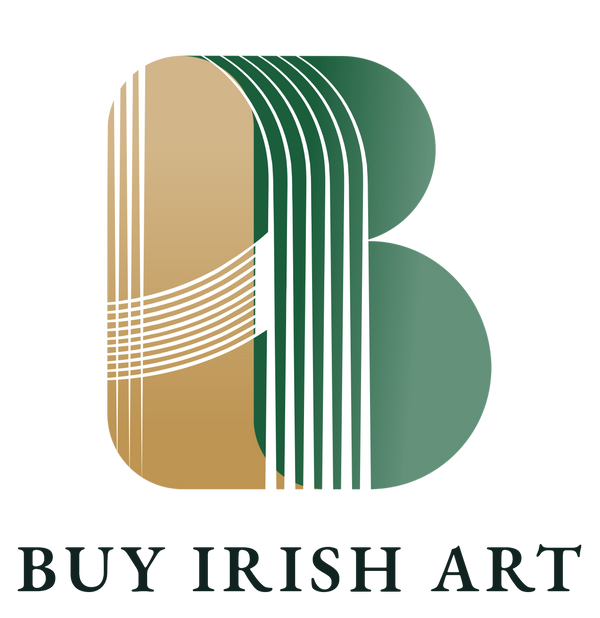Top 5 Irish Artists of the 1800s
Top 5 Irish Artists of the 1800s
The 19th century was a transformative era for Irish art. Amid political upheaval and a growing sense of national identity, Irish artists began to distinguish themselves in both local and international spheres. They captured the Irish landscape, people, and spirit with a distinct sensitivity, often blending classical techniques with a fresh, emotional depth. Here are five of the most influential Irish artists of the 1800s whose works continue to resonate today.

1. Daniel Maclise (1806–1870)
Daniel Maclise was one of the most celebrated Irish painters of the 19th century. Born in Cork, he became known for his large-scale historical and literary scenes. After studying at the Royal Academy in London, he produced grand narrative works such as The Marriage of Strongbow and Aoife (1854), which is housed in the National Gallery of Ireland.
Maclise had a flair for drama, composition, and costume detail. He was also commissioned to paint murals in the Palace of Westminster, including The Meeting of Wellington and Blücher after the Battle of Waterloo. His work reflected both Irish and British history, showcasing his ability to navigate two national identities in a complex time.

2. James Arthur O’Connor (1792–1841)
A master of atmospheric landscapes, James Arthur O’Connor was a key figure in Irish Romanticism. He captured the moody, weather-beaten Irish countryside with a poetic sensibility, often choosing humble, rugged scenes over grand vistas.
O’Connor’s work stood out for its subtle light effects and emotional depth. While he struggled financially during his lifetime, his reputation has grown significantly since. Today, he’s recognized as one of the most important Irish landscape painters of his era, offering an evocative visual record of Ireland before the Great Famine.

3. George Petrie (1790–1866)
Sometimes called “the father of Irish archaeology,” George Petrie was not only a painter but also a scholar, antiquarian, and preservationist. His watercolor landscapes and architectural studies were deeply informed by his interest in Irish history and culture.
Petrie’s art was instrumental in documenting ancient Irish sites at a time when many were at risk of being lost. His work with the Royal Irish Academy helped foster a renewed appreciation for Celtic heritage and early Christian art. Through both brush and pen, Petrie helped redefine Irish identity in the 19th century.

4. Nathaniel Hone the Younger (1831–1917)
A grandson of the 18th-century portraitist Nathaniel Hone the Elder, Nathaniel Hone the Younger made his mark with tranquil rural scenes and luminous landscapes. Though his mature work extended into the early 20th century, his style was shaped in the 1800s by the Barbizon School and plein air painting.
Hone often painted in County Wicklow and the West of Ireland, capturing the changing light and pastoral beauty of the countryside. He was a founding member of the Royal Hibernian Academy and one of the few Irish artists to exhibit regularly at the Royal Academy in London.

5. William Mulready (1786–1863)
William Mulready was one of the most prominent Irish genre painters of the early 19th century. Born in Ennis, County Clare, he spent most of his professional life in London, where he gained recognition for his finely detailed and emotionally resonant depictions of everyday life.
Mulready's best-known works, such as The Sonnet and The Toy Seller, exhibit strong narrative qualities and a remarkable ability to capture human expression and interaction. He was a member of the Royal Academy and was also involved in illustration work, including contributions to children's literature. His influence was felt not only in Ireland but across Victorian Britain as well.
